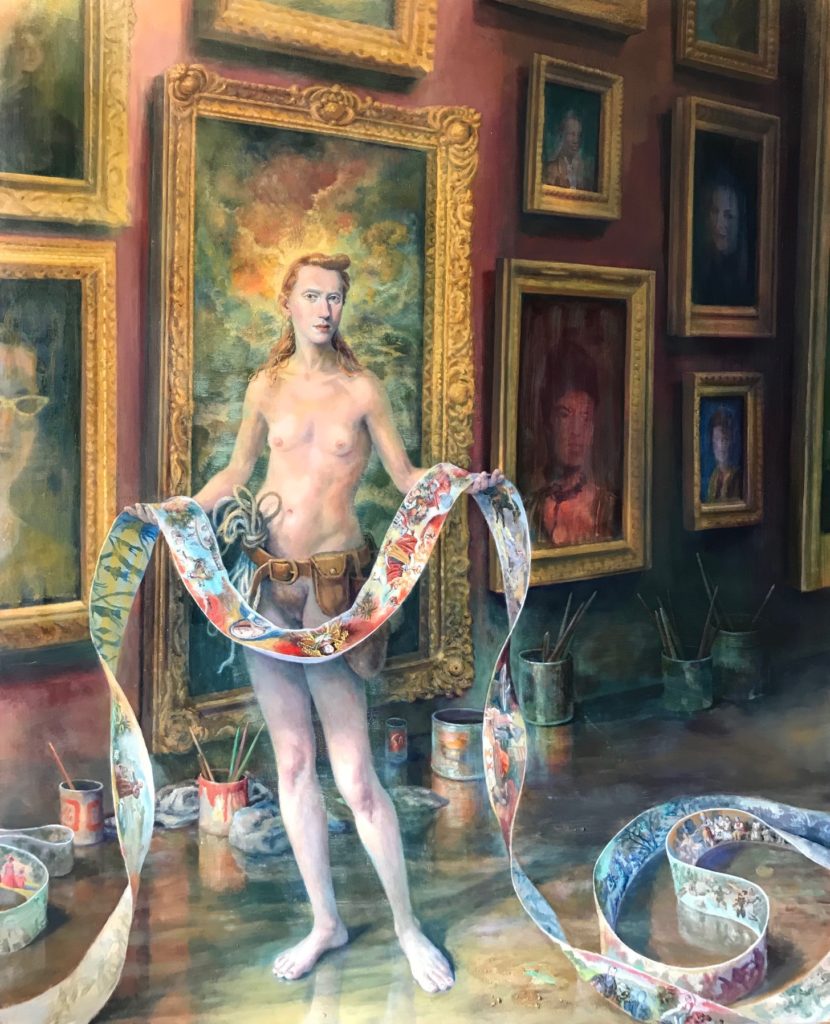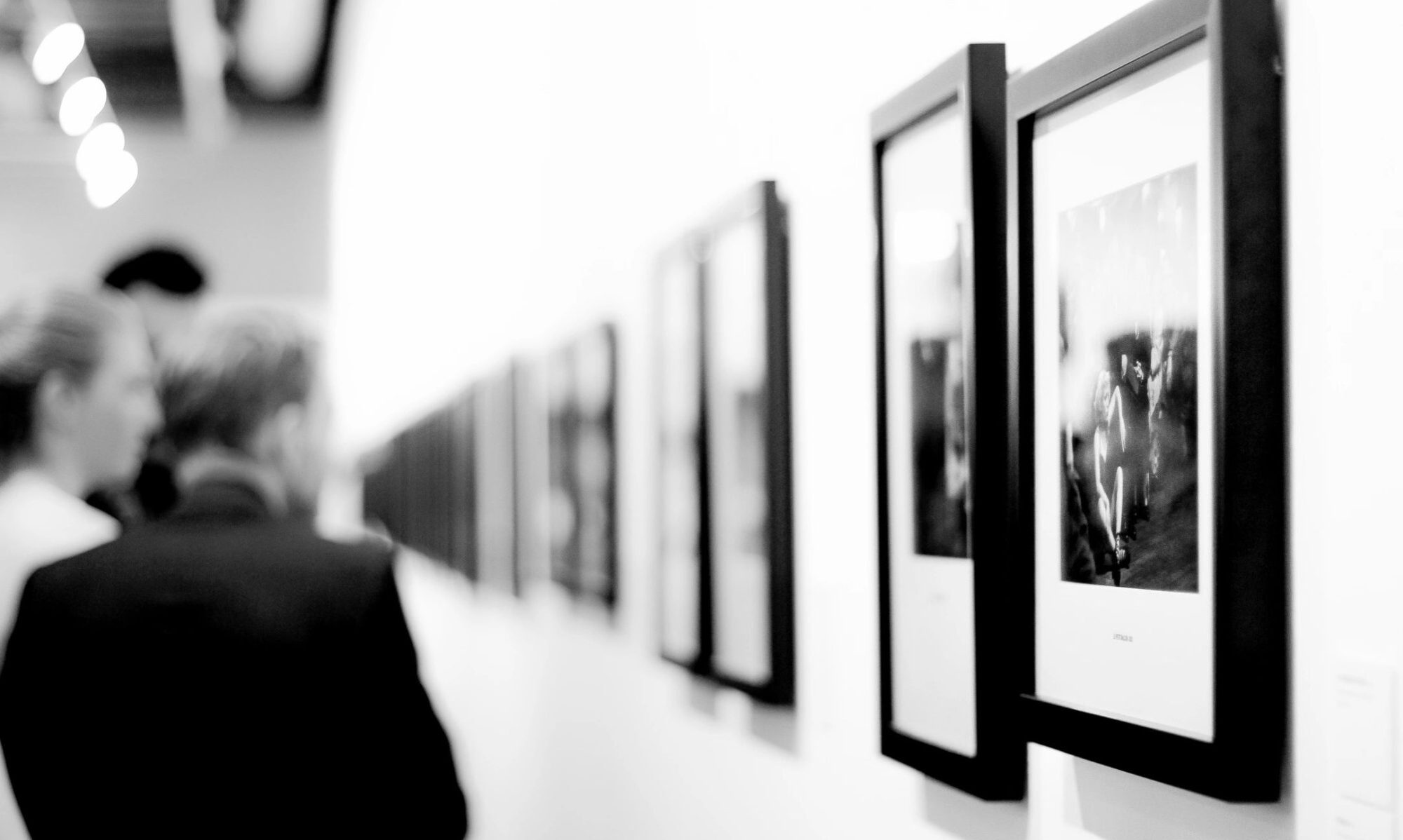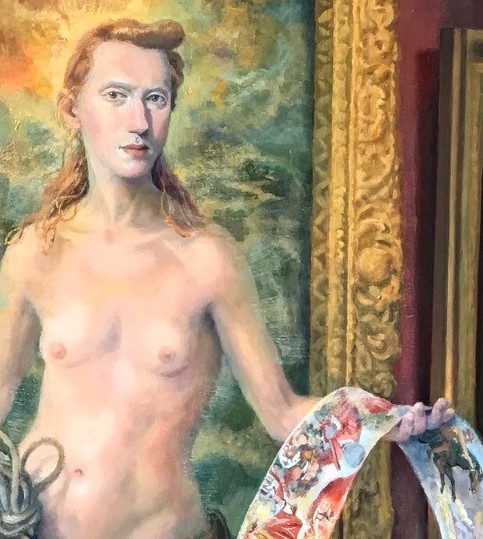To Hear and Be Heard
Julie Heffernan
Julie Heffernan is an American painter whose artwork has been described by the writer Rebecca Solnit as “a new kind of history painting” and by The New Yorker as “ironic rococo surrealism with a social-satirical twist.” Portraiture is a dominant subject in Heffernan’s painting, even while she also reflects on environmental, (art) historical, feminist, literary, social, and political subjects.
Heffernan was raised in Northern California, received her Bachelor of Fine Arts in printmaking and painting from University of California at Santa Cruz, and earned a Master of Fine Arts at Yale School of Art. She is a Professor of Fine Arts at Montclair State University and Co-founder of the journal Painters on Paintings. She lives and works in Brooklyn, New York.
In 2011, Heffernan was elected a National Academician to the National Academy of Design in New York and in 2014, to the Board of Governors. She is a 2017 Fellow of the BAU Institute at the Camargo Foundation in Cassis, France; was awarded the Meridian Scholar Artist-In-Residence Fellowship from the University of Tampa in Florida and was the featured artist for the 2017 MacDowell Colony. In 2013, Heffernan was awarded a Milton And Sally Avery Fellowship at MacDowell and in 2012, she was invited to be the Lee Ellen Fleming Artist-In-Residence at the University of Virginia in Charlottesville. In 2010, she was the Commencement Speaker for the Pennsylvania Academy of Fine Arts and in 2009, she was the featured artist at the Brooklyn Academy of Music. A recipient of a National Endowment for the Arts grant, a New York Foundation for the Arts grant, a Fulbright-Hayes grant to Berlin, Heffernan was also a nominee for the “Anonymous Was A Woman” award. Since 1999, Heffernan has had more than 50 solo exhibitions at museums and other venues across the United States and abroad. Her work is represented in 25 museum and institutional collections. She has been represented by Catharine Clark Gallery since 2005.

Self-Portrait with Eruption, 2019
Oil on canvas
68” X 55”
Courtesy of the Artist and Catharine Clark Gallery
Self-Portrait with Eruption
What is the artist’s role in society? Creator? Cultural Influencer? Visual Historian? Activist?
In Julie Heffernan’s Self-Portrait with Eruption the artist is all of the above, paintbrushes and cans of paint at the ready. Draped across her hands she presents a painted scroll illustrating “double-sided” narratives of the past, which include, Currier and Ives’ The Last War Whoop; The Bath by Jean-Leon Gerome; and In the Harem by Vincent G. Stiepevich. Behind the artist is a gallery wall filled with painted portraits of exemplary citizen activists that courageously worked for social and environmental justice.
Who are these citizen activists? Women from history and present day that have spoken out and taken action to expose and correct societal problems, creating a new narrative and a more civil, inclusive and sustainable future. (From top left to bottom right) Civil rights activist Rosa Parks, well known for her pivotal role in the Montgomery bus boycott, which set in motion nationwide efforts to end racial segregation. Yuri Kochiyama, a Japanese American human rights activist, worked with Malcolm X for civil rights, and dedicated her life to social justice as an advocate for prisoners, nuclear disarmament and Japanese American reparations. Ella Baker, an African American civil and human rights activist, worked alongside W.E.B. Dubois, Thurgood Marshall, A. Philip Randolph, and Martin Luther King Jr., playing a key role in organizations such as the NAACP, the Southern Christian Leadership Conference and the Student Nonviolent Coordinating Committee, among others. Ida B. Wells, an African American investigative journalist, educator and activist who brought attention to the horrors of lynching, was an early leader in civil rights and women’s suffrage, and participated in the founding of the NAACP. Sylvia Earle, an American oceanographer, explorer, author and lecturer, the founder of Mission Blue, a National Geographic explorer-in-residence, and the first female chief scientist of the U.S. National Oceanic and Atmospheric Administration. Frances Beinecke, NRDC’s president from 2006 to 2015, worked on finding solutions to some of the biggest environmental challenges of our time, including establishing a clean energy future that curbs climate change, reviving the world’s oceans, defending endangered wildlife and wild places, protecting our health by preventing pollution, fostering sustainable communities, and ensuring safe and sufficient water.


